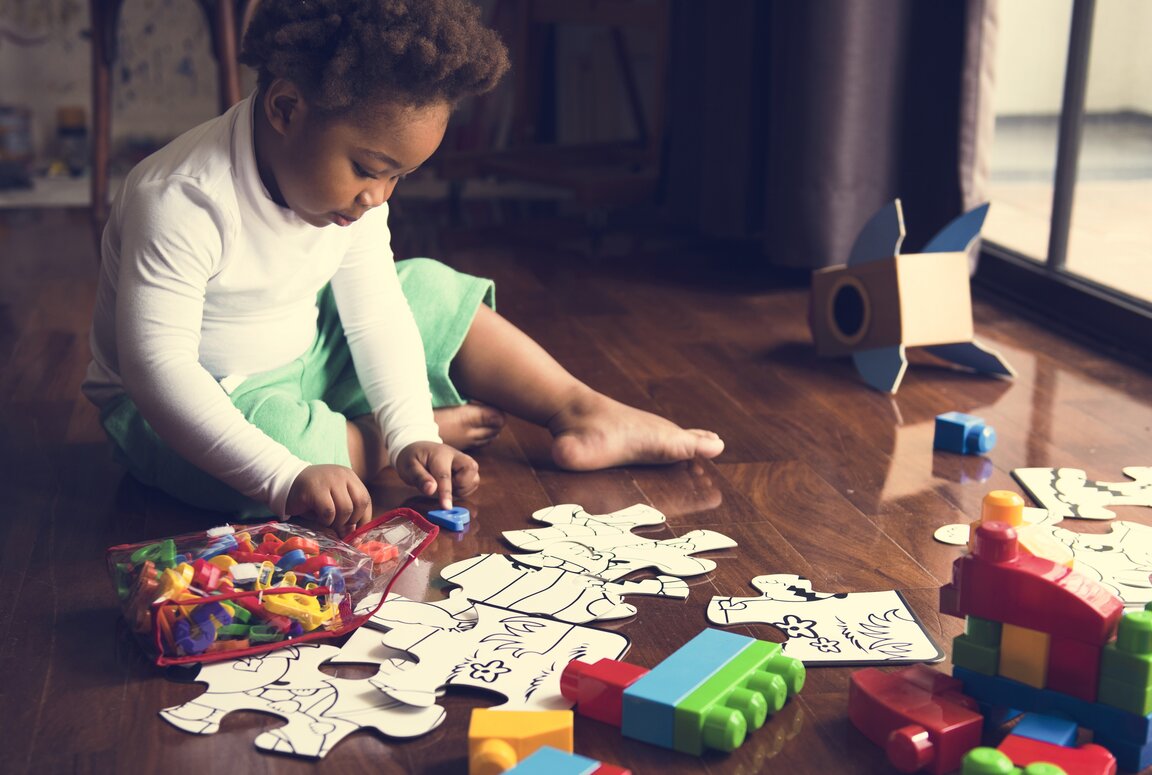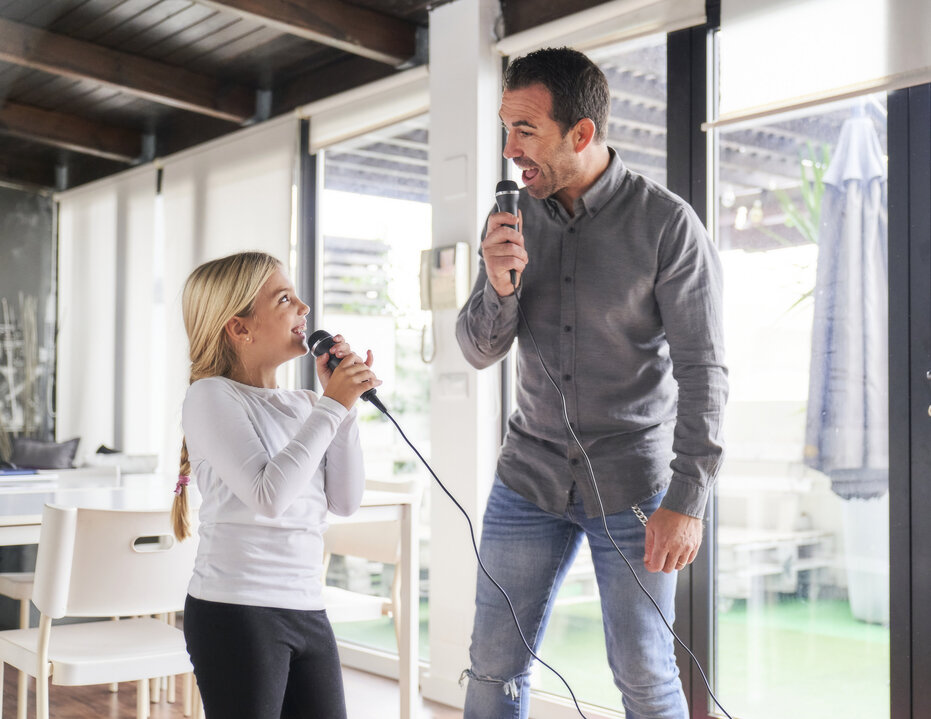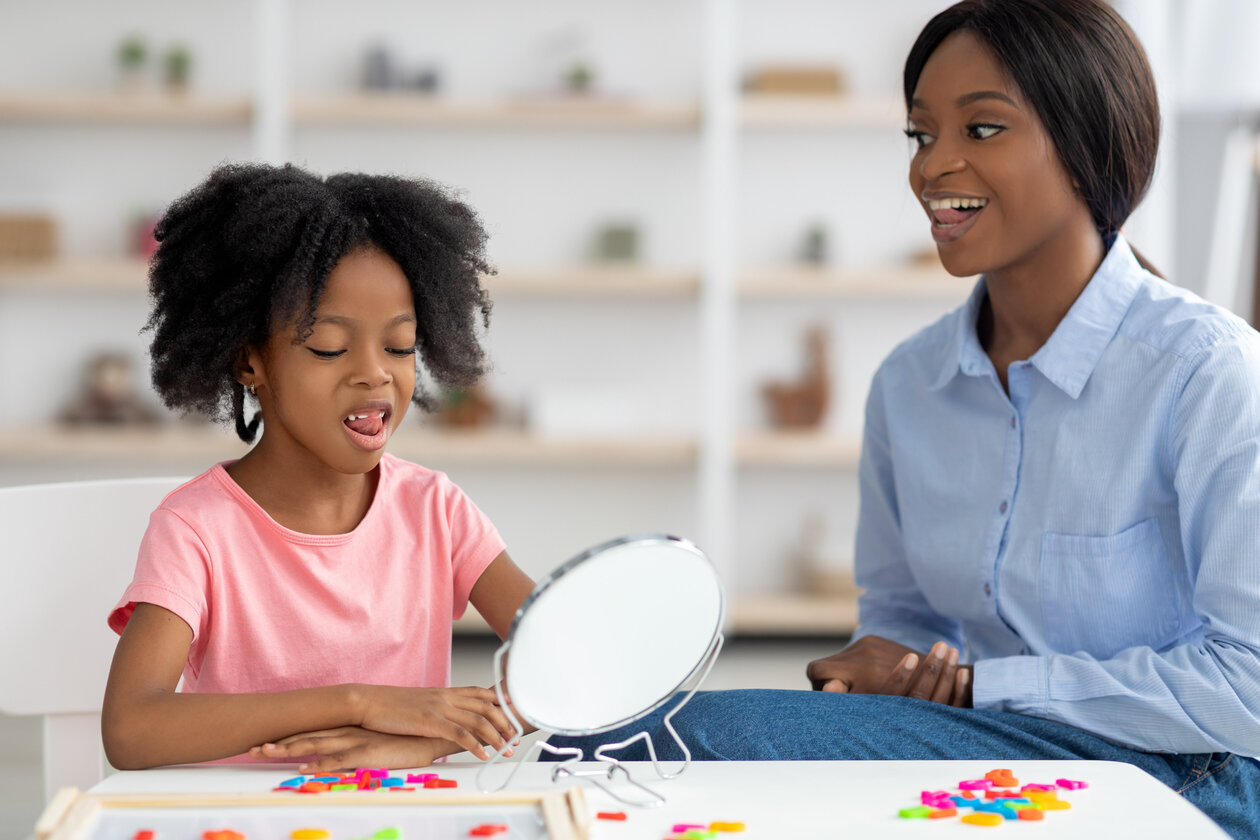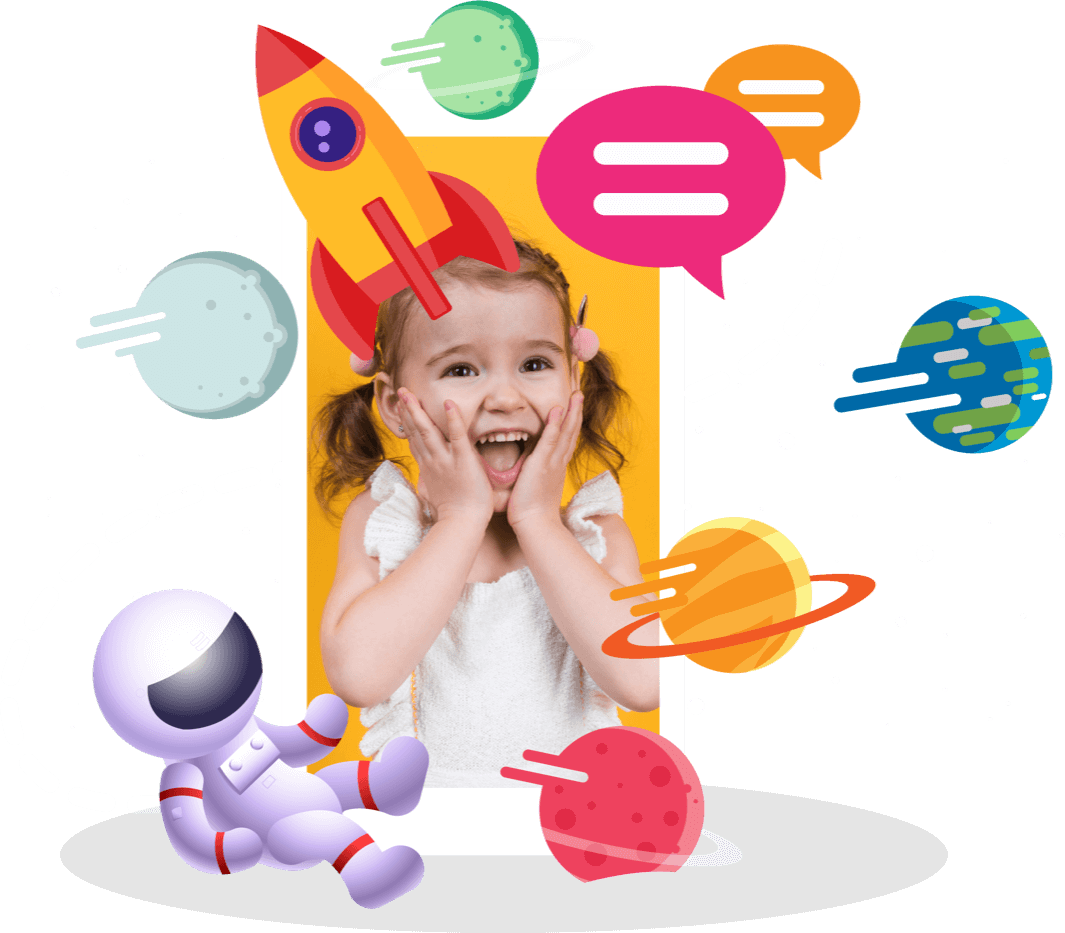What is speech and language?
Speech can be defined as “the communication or expression of thoughts in spoken words.” To be able to speak, a person needs voice, articulation, and rhythm (fluency) . Voice is the sound produced using vocal cords (tissue in the throat that vibrates when you speak) and proper breathing.
Articulation is the action (physical movement of the mouth, tongue, and lips) of producing understandable and clear sounds. Rhythm, on the other hand, is the flow of speech. The rising and falling volume of voice, pausing or stressing certain parts of sentences are all examples of rhythm in speech.
All three elements play a role in speech production . First, the message (what you want to say) is created in the brain. Then, the message is physically produced using sounds. Specifically, the person breathes in and then exhales. The air goes out from the lungs to the larynx. This is where vocal cords are located in the throat.
To make sound, vocal cords close up, prevent the air from passing, and vibrate. After that, the air goes into the nasal or oral cavities (air-filled space in the nose and mouth). Sounds like “m” or “n” are nasal while “p” and “q” are oral. This differentiation is done at this stage.
In the final step, The parts needed for articulation are selected. Mouth, lips, teeth and tongue are the parts in question. The sounds are articulated using the right physical component (i.e., “m” sound with lips closed). This whole process sums up how speech is produced.
Language is the method of communication. Speech without language is just articulated sounds. They do not mean anything unless there is a tool like language that assigns meaning to these sounds. For example, the word “hello” is just a combination of sounds. If you didn’t know English, you wouldn’t know that all these sounds actually refer to a greeting word: hello.
Language combines these sounds into meaningful symbols such as words, phrases, and sentences. People that live in the same community often share an understanding of the same language and can communicate through it.
Speech is only one of the ways humans use language. Using assistive technology devices (i.e., apps, picture boards, speech generating devices), sign language and written language are other methods that can be used for communication. So, people are not limited to use speech only and there are other ways to communicate. That is why development and the use of speech and language are closely related, but separate processes.

There are four main elements of language.
- Phonology refers to different sounds that make up a language. For example, the letter “s” has a particular sound when it comes out of the mouth. This sound also changes depending on the other sounds near it. You can think of the pronunciation of “s” in the words “cats” and “dogs”. In the former word, it is pronounced as “s”. However, the sound resembles “z” more in the latter example.
- Semantics can be defined as the meaning of a word or a phrase. There can be multiple meanings of words in different contexts or with different uses. Semantics are about the literal meaning independent from the context. For example, the word “person” may mean a man, woman, child, toddler, father, mother, or sibling. The phrase “brush your teeth” may mean “brush your teeth now” for the parent but it can also be interpreted as “brush your teeth everyday”. The meaning (semantics) change across situations and people.
Come along with 200k+ families!
Explore the endless possibilities of learning!
Download for Free.
-
Syntax is about the rules to arrange words and phrases correctly when forming sentences. In other words, verbs, subjects, objects, and nouns should be placed properly in order to build an understandable sentence. Grammar is one of the key components of syntax. Starting a question with a question word (i.e., who are you?), putting adjectives before nouns for description (i.e., yellow ball), putting subjects before words (i.e., they saw) and other grammar rules make it easier to comprehend what is being communicated. Every person that can speak that language knows these rules; understands and uses them.
-
Pragmatics refers to the meaning of words and phrases with regard to context . Differently from semantics, pragmatics focus on communicative meanings, inferences and social cues. Consider the phrase “Can you give me the bottle?”. Semantically, it means “Are you capable of giving me the bottle?”. In the literal sense, you may infer that the other person talks about your level of physical strength and dexterity to hold, lift, and give the bottle to them. However, from a pragmatics point of view, the person simply wants you to pass the bottle to you. The meaning of the same phrase changes depending on the context and reasons for communication.
One has to master all of these elements to a certain extent for proper language development. They learn how to hear different speech sounds, interpret their nuances and then produce these sounds. They understand the literal and figurative meaning of words and grammatical rules in order to combine words into sentences. Many more related skills should be worked on at the same time for proper language development.
There are also two different but interrelated sets of skills of language: receptive and expressive language. Both are necessary for communication.
-
Receptive language (comprehension) is about understanding what is being communicated. It involves keeping track of the visual, written, auditory and social cues of the environment. For instance, seeing keys and understanding that your friend is going out; looking out for signs around like “stop”; hearing the bell and comprehending it is recess time; seeing the mother smiling and understanding she is praising you. To be able to comprehend, one must listen, pay attention, concentrate, follow gestures (nonverbal language) and facial expressions (changes in the face according to emotions), recognize social interaction rules (when to talk, when to listen) and follow instructions.
-
Expressive language refers to sharing thoughts, needs, ideas and emotions using words. It involves labeling objects by their names, describing things, forming sentences with right grammatical forms, telling stories, answering questions and other skills similar to these. Receptive language skills are required for healthy development of expressive language. A person should first understand language and what is being communicated. Then, they can convey their messages. There are different ways for expression. Speaking, writing, using gestures or sign language or other assistive technology devices are the most common ways.
Typical speech and language development in children
As the ears develop in babies while they are still in the womb, earliest forms of communication start developing. It is a passive phase. The babies only listen to the voices and noises near them. They absorb sounds and language around them. Later, they start reacting to sounds. Mostly, they recognize their mother’s voice or other familiar voices such as lullabies and start moving around in the belly.

Birth to 1 year
After being born , crying, cooing, making sounds and smiling becomes the first language of babies. They use all these to meet their needs such as hunger, care or soothing. These will be transformed into first words in approximately a year.
In the first year , babies babble (“pa” and “ba” sounds), giggle, respond to caregiver’s tone and other sounds around them. They start turning to the direction of sounds, understand simple phrases like “stop” or “no”, point to objects, use gestures (i.e., waving) and say their first words. Specific skills related with this stage are:
- Turning head or eyes toward sounds
- Reacting to changes in sounds or volumes (being startled when it is louder)
- Carefully watching faces and mouth movements
- Recognizing caregivers’ and close relatives’ voices
- Smiling (especially if other people are smiling or laughing)
- Producing sounds (cooing)
- Expressing needs with different cries (crying when hungry or when hurt are clearly different)
- Listening carefully to the environment (i.e., dog barking, when someone starts talking from the other room)
- Responding to their name (by looking at who is calling)
- Understanding small words (and their gestures) like “bye” or “down”
- Pointing at people or objects when someone else calls its name (i.e., mommy, dog)
- Understanding songs and reacting to them (jumping, moving hands especially to the songs they have heard before)
- Making eye contact with others
- Taking turns in conversations (by babbling or cooing when it is their turn)
1 to 2 years
From 1 to 2 years , children’s vocabulary expands exponentially as they both understand and use lots of new words. They start understanding and following simple instructions (i.e., get the ball). Beginnings of asking and answering simple questions (i.e., where’s the dog?) start developing as well. More skills listed below are expected to develop in this period.
- Engaging in activities together with an adult (joint attention, i.e., looking at books, pictures)
- Enjoying sounds (i.e., music or sounds of objects) and dancing to rhythm
- Vocabulary spurt (rapid expansion of vocabulary with accelerated speed)
- Increased babbling that sounds like sentences even though they are not real words
- Closely watching and copying people’s gestures and speech around them (i.e., waving, greeting, smiling, pointing)
- Increasing level of attention (they can focus on activities for much longer)
- Understanding simple questions and directions (i.e., where is mom, give me the car)
- Talking in single words that are clearer, even though still hard to comprehend for others
- Forming short sentences using few words (i.e., hi daddy)
- Increased use of gestures along with speech sounds or words (i.e., reaching to or pointing at items)
- Using small variations in speech and sound (i.e., using different volumes or emphasizing certain words while speaking)
- Enjoying pretend play (i.e., dressing or feeding dolls)
- Starting to be more independent but still preferring being with an adult more
2 to 3 years
Between ages 2 and 3 , children start to develop understanding of opposite meanings and following multi-step instructions. Apart from this, their vocabulary grows. Children between these ages typically develop skills such as:
- Listening to and understanding instructions that are longer and more complicated (i.e., put the toy in the box)
- Putting more words (i.e., 4 or 5) together to form sentences
- Starting to ask lots of questions especially to learn object names
- Beginning to understand more “who”, “what”, “where” questions
- Understanding prepositions (in, on, under) and simple adjectives (big, small)
- Producing more speech sounds but might have difficulty with certain sounds (sh, r, ch etc.)
- Remembering stories, pictures, videos and anything they were exposed to
- Stronger attention to conversations but still might be distracted easily and interrupt other people while talking
- Having more interest in playing with other people
- Expressing emotions using words along with actions (i.e., saying “I am happy” while smiling)
It’s best to keep in mind that at this age, they might have struggles with:
- Talking on the same topic for a long time
- Pronouncing correctly. However, people mostly understand words or phrases they are trying to express.
- Talking without stuttering. Talking is still a work in progress at the moment that’s why they might stutter out of excitement or while trying to come up with the best words to express their thoughts and needs.
3 to 4 years
3 to 4 years , they begin to understand more complex word groups like adjectives. They begin using pronouns, plurals and multiple word sentences. They start asking more questions and explaining daily activities. Skills developed at this stage are as follows:
- Being able to focus for an extended period of time
- Listening to longer stories and answering questions about them
- Comprehending and using concepts like colors, numbers or time (i.e., yellow car, four eggs, morning)
- Forming longer sentences and linking more sentences to explain something
- Describing actions, events or items (using adjectives or past time)
- Using simple future and past tenses
- Asking more questions (using what, where, when etc.)
- Understanding “why” questions on a simple level
- Enjoying pretend play more and can play for longer
- Understanding turn-taking or other social aspects of communication more
You can expect them to have difficulty in:
- Multitasking (i.e., listening to someone while painting)
- Grammar rules (“goed” instead of “went”)
- Pronunciation of some sounds (r, th, ch etc.)

4 to 5 years
Ages 4 and 5 are the years that children understand most communication around. Also, they can produce sounds correctly and many people understand what they are saying. They can tell short stories, talk with other people and use more grammatically difficult sentences. At this age, children are expected to develop skills listed below.
- Understanding more complex language and grammar (i.e., might, first-last)
- Forming much longer and complicated but correctly formed sentences (i.e., first we went to the market, then we came home)
- Asking more about meaning of words or phrases to understand
- Pronouncing sounds in a more understandable way
- Understanding instructions (with multiple steps) while engaged in another activity (attention can be divided up for multiple activities)
- Following a short story with no visuals
- Choosing friends to play with them
- Plays are more constructed and longer
- Taking turns in longer interactions
- Laughing at jokes
They can still experience difficulties in:
- Grammar (“fishes” instead of “fish”, “comed” instead of “came”)
- Pronunciation of certain sounds (r, th etc.)
5 to 7 years
At ages 5 to 7 , children began to be really skilled at language and communication. They begin to use language for different reasons. Some specific developments in these years are:
- Being able to attend for a longer period of time without being distracted
- Learning new words without using other representations (pictures, physical items)
- Spelling, reading and writing start to develop
- Meaning of words are more in focus (different words with same meaning: “few” and “less” and same words with different meanings: “fly” the insect vs. the verb)
- Understanding more adjectives and adverbs (i.e., smart, easily)
- Using language for different reasons (giving comments, discussing opinions)
- Thinking and talking in a more complex manner (i.e., metaphors, non-literal forms of language)
- Understanding and using passive tense (i.e., the car was stopped by mom)
- Telling meaningful stories in a more detailed manner
7 to 11 years
At this stage children begin to develop and enhance skills related with reading, writing and grammar. More specifically, children between these ages are expected to master skills in the list below:
- Being able to form much longer and more complex sentences
- Most of the grammar is acquired (passive tense, comparative words, compound sentences)
- Understanding inferences and more abstract uses of language (predicting results, drawing conclusions, understanding jokes or riddles etc.)
- Understanding the difference between factual (what really happened) and theorized (what could have happened and why) information
- Can read, understand and retell stories
- Using language to give opinions, show support or disagree with the others (presenting reasons for agreement or disagreement etc.)
- Starting conversations with other people, following the natural flow of interaction, making eye contact and taking turns
- Summarizing, organizing and presenting information (can understand and express using their own way)
11 to 17 years
Between ages 11 and 17, more abstract and nonliteral uses of language develop. Simple and concrete use of language has already developed in full. Children (and teenagers) are expected to have the following skills:
- Using long sentences with 10 or more words
- Linking sentences using conjunctions (i.e., however) to express ideas better
- Making jokes and using sarcasm well
- Understanding when others are being ironic, sarcastic or using figurative language
- Changing conversation topics in a polite way
- Comprehending meaning behind idioms, proverbs and slang
- Shifting the manner of talking according to the context (i.e., talking with teachers vs. friends)
The milestones mentioned above are skills an average typical child should master before passing on to the next stage. They are valid for most typically developing children but still variations occur. So, please note that if some skills are underdeveloped in your child, try to keep an eye on them but not worry as much. Speech and language development is a gradual and personal process. Sometimes, natural delays occur. If you still have concerns, we recommend talking to a professional.
Speech delays
When children miss some of most of the milestones or they struggle developing the necessary skills of their age, you may have them checked by a professional. These are called speech or language delays and indicate differences in development.
Causes of speech delays differ. There can be physical problems in the mouth or the tongue that limit speaking. Also, the problem might be in the areas of the brain responsible for speech. Not to miss, hearing problems are very effective on speech development and may cause delays as well.
Monitoring the developmental milestones is a good way to identify early signs of differences. However, please remember that all children develop at their personal pace. The milestones are average estimations. Not every child who misses a particular skill has a speech or language problem. Of course, if needed, seeking an expert evaluation is suggested.

Specifically, speech-language pathologists can evaluate the child’s speech development using various tests. You can also consult psychologists or pediatricians and they may refer you to a speech-language pathologist if needed.
Depending on the result, the speech-language pathologist may offer activities to do at home with the child to foster speech development. Also, they may recommend speech therapy or ask for further evaluation by other professionals (audiologist, psychologist etc.).
Difficulties in speech and language
Speech delays may signal further difficulties. People can experience separate problems in speech and language . First, let’s look into adversities in language. Many individuals have difficulties in both receptive and expressive language.
Receptive language problems
Struggling to understand what other people are saying indicates problems in receptive language. The difficulties can be about:
- Understanding nonverbal gestures and facial expressions
- Following instructions like “put down the toy”
- Understanding questions and answering correctly
- Being able to match objects with pictures or words (i.e., naming and pointing to items)
- Understanding the reciprocal nature of communication (i.e., turn-taking)
Expressive language problems
Having difficulties when expressing one’s own ideas or thoughts is related to expressive language. Problems related with this area can be about:
- Naming items
- Asking questions
- Engaging in nonverbal communication tools such as gestures
- Forming sentences
- Using the right grammar
- Knowing how to initiate, maintain and end conversations
- Expressing emotions

When talking about language problems, it is important to also mention selective mutism and learning disabilities.
-
Selective mutism As the name suggests, children may be talking at some places or with some people but prefer not to talk in other situations. The underlying causes might be anxiety, being shy or avoiding embarrassment. The true cause can only be understood by a professional (i.e., psychologist)
-
Learning disabilities are problems about reading, writing, spelling, grammar, math and other school subjects. Problems in learning and keeping up with the school can be observed. Only a professional (i.e., psychologist) can diagnose someone with a learning disability.
Challenges about producing sounds, adjusting volume, maintaining rhythm or stuttering occur when the problem is about speech. Some examples of speech disorders are explained below.
-
Apraxia of speech is a motor speech disorder that makes it hard to make the physical movements correctly. The problem is about the brain. The muscles typically receive a message from the brain and then make the necessary movements accordingly. In apraxia of speech, muscles cannot get the message from the brain that makes them move.
-
Dysarthria is a muscle weakness disorder that limits movement of lips or tongue. The produced speech can be slurred and hard to understand. Most common cause is nervous system disorders.
-
Sound disorders are about having trouble producing certain sounds (articulation). The reasons may differ. But it is crucial to assess the developmental level of the child when diagnosing. There are natural difficulties in producing sounds at certain ages. For example, it is perfectly normal when a 3 year old cannot pronounce “ship” correctly. It may indicate an issue for a 7 year old.
-
Articulation problems . Struggling to produce certain sounds may refer to articulation problems . Children who have this issue may omit (i.e., “gin” for “green”), substitute (i.e., “wabbit” for “rabbit”), add (i.e., “doguh” for “dog”) or distort sounds (i.e., “ssssun” for “sun”) in words.
-
Fluency problems . The problem may be about the flow, speed or rhythm of speech. Stuttering (interruption in speech) and cluttering (rapid or irregular speech rate with atypical pauses) are common examples of these kinds of problems. Speech may be blocked (cannot initiate sound), interrupted (unexpected pauses in the middle of sentences) or sounds may be repeated (“b-b-bye”) or elongated (“ssssummer”).
-
-
Voice disorders root from problems in either vocal cords (nodules, movement issues etc.) or other chronic conditions (i.e., coughing). They affect the ability to speak in a typical way. The voice can be strained, trembling, shaking, raspy or breathy.
- Resonance problems . For proper speech, there should be a good airflow between nasal (nose) and oral (mouth) cavities. There are different parts that help air pass through the right place for accurate sound production. A resonance disorder occurs when the regular airflow is blocked, obstructed or moved inconsistently. This changes the way air flows and voice quality suffers. The produced sounds can be hypernasal (too much sound coming from the nose), hyponasal (not enough sound coming from the nose) or trapped and cannot exit because of obstruction (similar to muffled speech).
Detecting the problem area is crucial but it may not be clearly distinctive. Although speech and language are different constructs, they tend to overlap or affect each other. For instance, struggling in producing sounds may limit the skills related with expressive language too. Or deficits in comprehension may also lead to a smaller vocabulary and the individual may have fewer opportunities to make sounds correctly.
So, it is important to consult a professional. After an extensive period of comprehensive screening, the right diagnosis as well as the right method of treatment can be suggested.
Speech therapy
Speech therapy (or speech-language therapy) is a treatment focused on overcoming communication difficulties. Contrary to common belief, both adults and children can benefit from speech therapy.
Speech-language pathologists (SLPs), also called “speech therapists”, are the professionals that are allowed to give speech therapy. They are required to hold at least a master’s degree and a certification from the relevant associations (i.e., American Speech-Language-Hearing Association).
What problems can be treated using speech therapy?
Many speech and language difficulties or disorders mentioned above can be treated with speech therapy. Articulation, fluency, resonance disorders, receptive and expressive language disorders, dysarthria and many more disorders can be treated using speech therapy.
How does speech therapy work?
There are several steps and techniques included in speech therapy. It is possible both for children and adults to receive speech therapy. The process is tailor made according to the needs of each individual.
- Assessment : In this first stage, the speech-language pathologist (SLP) conducts a comprehensive evaluation that includes:
- Medical history
- Background information (age, education, socioeconomic status etc.)
- Interviews with the family, teachers and other relevant people
- Cognitive skills evaluation (hearing, seeing, moving, understanding etc.)
- Tools that measure and monitor communication (objective tests, devices, observations etc.)
By the end of this stage, the SLP identifies the type of disorder and possible treatment options.
- Speech therapy for children
After an extensive assessment process, the SLP can choose from a variety of treatment options and strategies. The therapy can be done one-on-one or in a group setting (small group or a classroom). There are various different strategies used in speech therapy for children regarding their disorder, age and specific needs. Some strategies are mentioned below.
Come along with 200k+ families!
Let's communicate better!
Download for Free.
-
Exercises to boost language development. Simply playing, talking, looking at pictures of objects and events are included in these activities. The SLP actively lets the child communicate. The child gets to hear and be aware of the correct sounds of words. They can act out words, make up stories, role-play conversations to enhance vocabulary and conversation skills.
-
Exercises for articulation. The SLP breaks down words into sounds and models correct ways to pronounce them. Of course, the age of the child is important because some sounds cannot be produced at certain ages. Not only by slowly showing each sound in a word, the therapist (SLP) also shows how to physically make these sounds. For instance, the child gets a mirror and looks at their tongue when making the “r” sound. The SLP guides the child to move their tongue in the way it is needed to properly produce this sound.
-
Exercises for feeding and swallowing problems. Sometimes the problem is about eating, chewing or swallowing. In that case, speech therapy also includes exercises for the mouth, lip, tongue and jaw. The aim is to improve mouth muscles, tongue function and improve overall eating or swallowing. The SLP may present food with different sizes, temperatures or textures. Then, the child gets used to differences in food items and develops awareness during eating, chewing and swallowing.
-
Exercises for social communication. Social communication skills include using language in different settings for different reasons (requesting, greeting), changing language according to the other person (peers, parents, other adults) and conforming to the rules of conversation (turn taking, using gestures, making eye contact). Any problems in this area can be addressed and solved using speech therapy. The therapist detects the problem and initiates role play exercises to facilitate better social communication skills. Picture cards that show the right order of a conversation or educational videos can be used as well.
-
Exercises for caregivers (parents, teachers etc.). To make sure they also practice at home, the SLP can give homework. These can be practicing what they did during the therapy session. Additional strategies can be taught to caregivers as well. This makes sure the learning is extended far beyond the therapy atmosphere. You can find examples of these home activities in the upcoming sections.
Duration of speech therapy
There are several factors impacting the duration of speech therapy:
- Age. Earliest forms of speech and language begin developing in the womb. The more concrete signs of development can be understood by the age of 12 to 24 months. Children may miss some developmental milestones (significant events in certain ages), or, there can be delays.
Some speech or language problems and delays can be tackled more easily when the child is younger. Early intervention may prevent the problem becoming much more severe. The influence of the problem will be much less widespread with early intervention. So, a shorter version of the therapy can be sufficient. Remember that not all delays indicate a problem. Some can wear off with age.
- Severity of speech or language problem. When the problem is more severe, a longer therapy process might be needed. Here, severity refers to a problem affecting more areas in the child’s life. Or, creating more struggles in certain areas that makes life much harder. For example, the problem may make it so difficult to participate in class that the child does not want to (or cannot) attend school. This shows an increased severity.
Some children find it harder to produce sounds or meet other therapy goals. In this case, the therapy process may have to be longer as well. Severity of the problem changes according to the child. The same problem in two different children may cause different levels of difficulty.
-
Consistency of therapy sessions. For any learning process, consistency is a key component. The therapist determines the frequency of therapy sessions according to the needs of the child. It is just like determining the right dose of a medication. Then, the child is expected to attend the sessions accordingly. Missing sessions or regularly rescheduling will impact the rate of progress and the overall duration.
-
Presence of other problems. Sometimes children may have multiple speech or language problems at the same time. As a result, a longer and more intensive therapy process may be required. There can also be other medical or psychological problems. In that case, the SLP can refer the child to relevant professionals as well. This may elongate the process.
-
Parental involvement. Parents should be on board with the treatment goals. Sometimes, parents and the therapist may have different objectives. For example, parents sometimes may focus more on the concrete outcomes (i.e., clearer speech) and think the therapy process is ended when this occurs. However, the therapist may wait to see more overall changes in the influenced areas (i.e., school, play-time). Both should be on the same page for the maximum amount of benefit.
-
At-home practices. Repetition and exercising is key for learning. The SLP gives exercises that can be done at home. Parents should adhere and practice with their children. At-home practice is critical to get the best outcomes. Also, the duration may decrease with the increased level of practicing.
How to support speech and language development at home?

Although speech therapy provides the needed support and treatment for speech and language problems, it is not the only way. There are many ways to help children in language and speech development at home as well. Here we list the different activities that will aid in these areas.
- Communicate with your child. It may seem like a pretty simple suggestion, but it is the most important one. Parents may gradually decrease talking or initiating conversations with their children when there is a speech delay. Sometimes the reason can be not to discourage the child from speaking at all. Although these decisions are made with good intentions, they are not very helpful.
Instead of waiting for their first words, just talk to your child. Start as early as you can, even if they are only infants. You can even babble or coo (“ba, ma, aa”). These simpler sounds will be easier to repeat. When they make any sound, look at them and pretend to have a conversation.
This will make them understand the ways of communication. They will get used to the natural flow of conversation. You can imitate them and ask them to imitate you. They will get a chance to practice what it is like to communicate and what is a better way than doing it in an actual conversation.
Speak slowly so that the child can understand what you are saying. If you do not get a response, you can always repeat. Be face to face and maintain eye contact at all times. Try not to sound like you are expecting much from them. Except, try to show your true interest in communicating with them.
As the child becomes older, you can encourage conversation by asking questions (“which toys do you like the best, why…”). You can ask other questions to elaborate the answers and promote more talking. This is a great exercise for practicing expressive language skills and it contributes to the development of higher-order abilities such as reasoning, sense of identity and self-esteem.
- Listen to your child. Listening is a crucial part of communication. To boost better speech and language skills, you must listen with attention. This way, they know you care about what they are saying and gain confidence.
Even though they have problems in fluency or finding the right words, wait patiently. Let them take as long as they need to convey their ideas. Try to tolerate silence and do not immediately talk for them. When you do that, they know you care and try to communicate with you more.
- Describe objects, actions and places. A day is full of opportunities to improve language skills. You can point to objects and name them. For example, while walking, point out the bike and name it out loud. Tools in the kitchen, different toys can also be used.
You can talk about what you are doing. For example, explain the steps as you are getting them dressed like “now I am putting your arm into the sleeve, now I am buttoning up your shirt”. This can be done for other activities as well.
Try to keep explanations or descriptions simple. So that, the child can attend to and understand. Another way of describing is making up stories out of everyday activities. For instance, a simple everyday task such as brushing teeth can be turned into a story. You can repeat the story every day and add new parts to it if you like.
- Sing to (or with) your child. Singing can facilitate speech because it has a certain rhythm, rhyming words and a melody to it. A song is much more predictable than actually speaking because it has words that you can memorize. So, the pressure of giving a response is off because the words are already made up.
When you can go along the melody and see that you can keep up, it is a natural boost of confidence. Songs also teach new words and help in memorization because of rhymes. Lastly, singing develops listening and social communication (if done together) skills.

- Read to (or with) your child. Most children’s books are full of eye-catching visuals. While you are reading the book, together you can look at the visuals and describe what is going on. Having visual aids along when listening to the story will enhance comprehension. After finishing, you can ask them to retell the story to another person. This will foster speaking skills as well.
Reading expands vocabulary and teaches ways to express ideas. So, the toolbox of words fills up and expressive language skills develop. Also, reading expands imagination and creates a feeling of security. The anxiety or nervousness associated with speech problems can be alleviated as a result. When older, the child can continue reading on their own.
- Use questions. Questions require answers and create natural communication opportunities. For younger children, ask questions with choices. For instance, the question “do you want to eat pasta or rice?” includes two choices. Yes-no questions work as well (“would you like to come grocery shopping with me?”). For older children, questions can be more open-ended (“what would you like to do today”, “why do you think the glass broke?”).
Secondly, let them ask questions. At first, you can make them request things. When they reach an object, say “do you want this? Then say, ‘mom can I have that’” and give it to them. Try not to be too persistent or annoying. If they do not repeat, you just model the question.
It is possible to let them ask for help by putting their toys somewhere they cannot reach. So, they have to ask for help. This is a good strategy, but we suggest doing it in moderation because it can get frustrating easily. The aim is just to let them know if they ask, you can help them.
Later, asking questions for other reasons can be practiced. For example, you can role play asking for directions or opinions. Playing a game where you ask a question to the child and then they ask you is another good option.
- Do not speak for them. It can be easier to speak for your child instead of waiting for them. Especially in small talk situations where another person asks for their name, parents can fill in immediately. This may seem practical or parents may think they prevent their child from feeling bad. But actually, this does not encourage speech development. Any learning happens with trials and errors.
By letting your child struggle for some time, you are also allowing them to overcome this difficulty. If the struggle becomes too frustrating, ask if they want help and support as needed.
A similar issue can be occurring when you assume the child’s needs. For example, the child is pointing at the fridge and before they say anything, you give them an apple. Yes, the child’s needs are met but communication suffers. Have them ask for apples.
- Concentrate on what the child can do. People are natural problem solvers. It is common to focus on errors to fix them. Although this may be functional in many ways, it can be harmful in others. Don’t focus on only the problematic areas of your child’s speech or language. This may create insecurity.
Instead, emphasize the behaviors which they can do and then work on the difficult ones. Improvement itself should not be the target here. The aim should be to help the child meet their needs that will help function in life in a better way.
In other words, this is not a simple win-or-fail situation. Reducing a speech delay into this will create other difficulties. At the same time, the apparent problems should not be overlooked or denied as well. a healthy middle position can be found.
- Use mirrors. Practice speech in front of a mirror. Let the child observe how their face and mouth move when talking. You can model a word and let them see the movements you make. Then they can repeat and try to match. Working on differences of movements will benefit a lot. The visual and more concrete feedback from a mirror can let them adjust easily.

- Let them do physical exercises. Sometimes, speech and language problems can happen because of physical issues. Movement practices in lips, the tongue, the cheek and other related parts work very well at home. You can try these in front of a mirror as well.
Lip exercises include making “oo” and “ee” sounds, smiling, blowing and curling and uncurling the upper lip. Tongue movements emphasize certain sounds (t, d, p, g), squeezing, relaxing and rotating the tongue. Pulling cheeks in, making an “o” and using straws can strengthen cheek muscles. In addition, licking lips, blowing bubbles and other activities that will stimulate muscles of the mouth area will help as well.
- Eliminate distractors in the environment. When you are doing these activities, try to dial the background noises down. TV, tablets or other devices may create unwanted distractions that make learning harder. If you are not specifically working on these devices, turn them off.
Speech and language differences in autism
As you can see from the typical development of speech and language, children learn these skills by watching and paying close attention to other people and their surroundings. They either imitate actions of others or react to events happening near them.
This interest to the outer world may be limited in autistic individuals. They usually prefer their private interests rather than being motivated by social cues or responses from people around them. Even if they attend to others, they may not pick up on social cues or messages.
Naturally, autistic children may progress differently in terms of speech development. Delays in certain milestones are common. There are some types of delays that may signify autism.

-
Motivated by own interests. As stated above, autistic children may only be motivated to communicate about their own interests. This may make them indifferent to any other topic. So, they may not be engaged in other people’s interests or may not catch social cues that call for attention. In the end, opportunities for communication may be very limited for them. Thus, they may not have enough chances to practice speech or language skills.
-
Little or no imitation. Imitation is an important learning method for children. Autistic children may not be interested to follow other people’s actions to imitate. To be able to acquire a particular skill, one must imitate. Speech is also learned by imitating physical movements and sounds made by other people. Lack of it may delay the development of speech and language.
-
Not responding to own name. Autistic children may not respond when someone else calls their name . Being unresponsive may diminish opportunities for social interaction and naturally for speech development. It also may indicate receptive language problems.
-
Problems in nonverbal communication. The lack of social interest and engagement may also be accompanied with problems is nonverbal communication tools like gestures. They may have difficulty in pointing to an object, making eye contact or using facial expressions.
-
Not communicating for social reasons. Autistic children mostly interact with others when they have something to ask or when they want to protest about something they do not like. Other reasons for communication like sharing thoughts, emotions or problems are less common.
-
Not following rules of interaction. There are some rules that determine the nature of communication. Facing the other person, making eye contact, taking turns, answering after pauses and initiating or ending conversations in socially appropriate ways may not be present in autistic children. This occurs because they may not know how to communicate with people and because of that, they may be unaware of their own behavior.
-
Echolalia (repetitive words or phrases). Repeating words or phrases is a common method for language acquisition that typically ends as development progresses. In autism, it may not end as expected and this is called “echolalia”. Repeating the same phrases, sentences or words are characteristics of echolalia. Sometimes, the repetition may have a purpose like to gather attention but other times it may be non-functional.
-
Delayed or uneven development of speech. Using only one-word sentences or repeating the same phrases for a long period may indicate delay in development. Also, they may develop a rich vocabulary only in their areas of interest. They may memorize words but may not understand when they read them. In other words, some areas may develop in a more typical manner while some develop in a dramatically slow way.
-
Being nonverbal vs. having speech delay. Some autistic children are completely nonverbal . Some may only use single words, and some may have speech delays. There is no clear line that distinguishes nonverbal or verbal individuals. Nonverbal people might develop verbal skills, but it may not be the case as well. Being nonverbal does not mean a person has no speech or language development. It only means they do not communicate using traditional spoken language. Most of the time when presented with other modalities for communication (i.e., writing, sign language, assistive technology), they learn to interact just as well as speaking.





